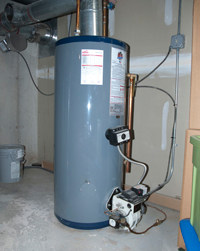How to Keep Your Home's Hot Water System Functioning Well
How to Keep Your Home's Hot Water System Functioning Well
Blog Article
What are your thoughts about Water Heater Maintenance Tips You Can't Afford to Forget?

Warm water is crucial for day-to-day convenience, whether it's for a rejuvenating shower or washing recipes. To guarantee your hot water system runs efficiently and lasts longer, regular upkeep is crucial. This post provides sensible pointers and understandings on exactly how to maintain your home's hot water system to stay clear of disturbances and costly repairs.
Intro
Preserving your home's hot water system might appear complicated, but with a couple of basic steps, you can ensure it runs smoothly for years ahead. This overview covers everything from recognizing your warm water system to DIY upkeep ideas and understanding when to call in specialist assistance.
Importance of Preserving Your Hot Water System
Routine upkeep not only prolongs the lifespan of your warm water system yet likewise guarantees it operates effectively. Disregarding maintenance can bring about decreased effectiveness, greater energy expenses, and also premature failing of the system.
Indicators Your Hot Water System Demands Upkeep
Understanding when your warm water system needs interest can stop significant concerns. Look out for indications such as irregular water temperature, odd noises from the heating unit, or rustic water.
Recognizing Your Hot Water System
Before diving right into upkeep tasks, it's valuable to recognize the basic components of your warm water system. Normally, this consists of the water heater itself, pipes, anode rods, and temperature level controls.
Month-to-month Maintenance Tasks
Normal regular monthly checks can assist catch minor problems before they escalate.
Flushing the Water Heater
Flushing your hot water heater removes sediment build-up, improving effectiveness and lengthening its life.
Checking and Replacing Anode Rods
Anode poles protect against corrosion inside the container. Checking and replacing them when worn out is vital.
Checking and Readjusting Temperature Level Settings
Changing the temperature level setups makes sure ideal performance and safety.
Do It Yourself Tips for Upkeep
You can carry out numerous upkeep jobs on your own to maintain your warm water system in leading problem.
Looking for Leakages
Routinely examine pipelines and links for leakages, as these can lead to water damage and higher expenses.
Checking Pressure Alleviation Valves
Checking the stress safety valve guarantees it operates appropriately and prevents excessive stress buildup.
Protecting Pipelines
Shielding hot water pipes minimizes warmth loss and can conserve energy.
When to Call a Professional
While do it yourself upkeep is beneficial, some problems need specialist proficiency.
Complex Problems Requiring Expert Assistance
Instances consist of major leaks, electrical issues, or if your hot water heater is continually underperforming.
Regular Professional Maintenance Advantages
Expert upkeep can consist of thorough examinations, tune-ups, and ensuring compliance with safety requirements.
Final thought
Routine upkeep of your home's warm water system is necessary for effectiveness, durability, and expense financial savings. By adhering to these pointers and recognizing when to look for specialist aid, you can make certain a reliable supply of hot water without unexpected disruptions.
Water Heater Maintenance Tips
Test the TPR Valve
Shut off the power and the cold-water supply valve. Place a bucket under the pipe connected to the temperature-pressure-release (TPR) valve on the top or side of the tank. (This valve opens if the tank pressure gets too high.) Lift the valve’s tab to let some water out, then let go. If water keeps flowing, drain the tank partway, unscrew the old valve with a pipe wrench, and install a new one. Check the Anode Rod
Put a hose to the tank’s drain cock and let out a few gallons of water. Now fit a 1 1/16-inch socket onto the rod’s hex head on top of the heater (or under its top plate) and unscrew the rod. If it’s less than ½ inch thick or coated with calcium, buy a new one, wrap its threads with Teflon tape, put it back in the tank, and tighten securely. Use this segmented rod if headroom above the tank is limited. Drain the Tank and Wash Out Sediment
Drain the remaining water in the tank into the bucket, then stir up the sediment on the tank’s bottom by briefly opening the cold-water supply valve. Drain and repeat until clean water comes out of the hose. Close the drain cock, refill the tank, and turn its power back on. Adjust the Temperature
Find the temperature dial on the side of the tank and unscrew its cover. Adjust the dial to 120 degrees using a flathead screwdriver. For every 10 degrees the temperature is lowered, you can expect to save up to 5 percent in energy costs. Turn the water heater off or the thermostat down to its lowest setting if you plan to be away from home for more than three days. Insulate the Pipes
Buy some self-sticking 3/8-inch-thick foam pipe insulation that matches the pipes’ diameter. Slide the foam over the hot-and cold-water pipes as far as you can reach. Insulating the cold-water pipe prevents condensation in summer. Peel the tape and squeeze the insulation closed. If the pipe is 6 inches or less from the flue, cover it with 1-inch-thick unfaced fiberglass pipe wrap. https://www.thisoldhouse.com/plumbing/21016402/how-to-maintain-a-water-heater

I came across that page on How to Maintain Your Water Heater & Prolong its Life when doing a lookup on the internet. Enjoyed our write up? Please share it. Let others find it. Thanks for taking the time to read it.
Explore Now Report this page